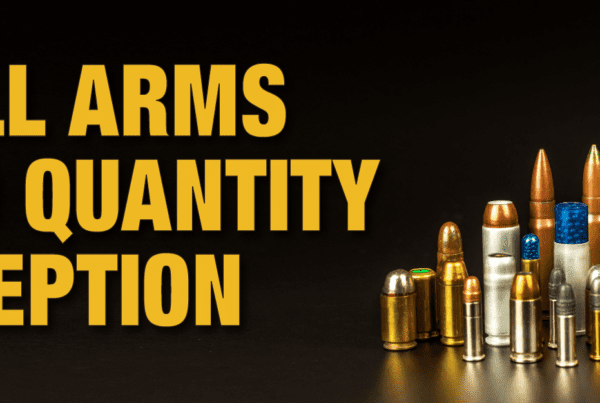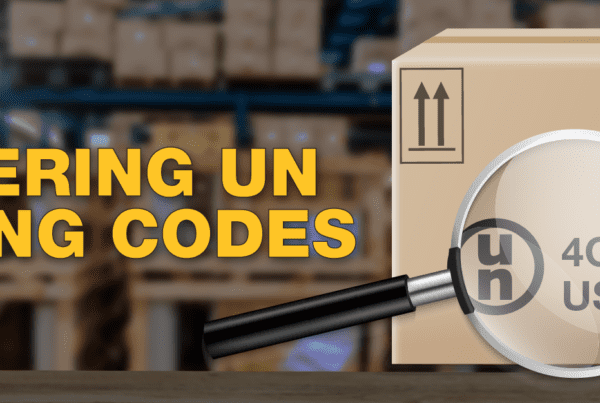What’s New in the IMDG Code Amendment 41-22?
The start of 2023 is also the start of a new United Nations (UN) biennium on dangerous goods. Regulations on transporting dangerous goods and hazardous materials based on the UN Model Regulations on the Safe Transport of Dangerous Goods will, sooner or later, be updated to reflect the new requirements introduced by the United Nations. As part of this, shippers by ocean must update their systems to reflect the new 41st edition of the International Maritime Dangerous Goods (IMDG) Code, Amendment 41-22 (2022).
Why Are We Using the 2022 Edition?
The IMDG Code has a rather confusing system for numbering new editions, as well as implementing them. The latest edition, which is to take effect in 2023, is referred to as “Amendment 41-22” – it is the forty-first revision to the Code, and it was (or was supposed to be) published and released in the end of 2022, so that shippers and carriers could get a head start on preparing for 2023. Unfortunately, this latest revision was only released as an electronic version in 2022 and the hard copy was pushed back to being released in early 2023. However, it will still be referred to as the 2022 edition.
The delay in getting the 2022 edition released will not cause serious issues, fortunately. Unlike the IATA Dangerous Goods Regulations, which become mandatory to update each January 1, the IMDG Code allows a one-year transition period. This leads to a rather confusing situation where the 2022 edition isn’t intended for use until January 1, 2024, and the 2020 edition may be used through 2023.
What’s New in the 2022 Edition?
Unlike some previous years, the changes in the IMDG Code are not sweeping. Changes reflect the UN Model Regulations on the Transport of Dangerous Goods Revision 23 (2023), which are mostly incremental. One area where there does seem to have been more significant changes is with regards to the testing and certification of various types of pressure vessels such as cylinders and aerosols.
Here are some of the more notable changes to the new Code:
Part 1, General Provisions
- Chapter 1.2, Definitions – Some modifications to existing definitions have been made and some new definitions have been added, such as “inner vessel,” “pressure receptacle shell” and “service equipment for pressure vessels.” Also, an entry has been added specifying which editions of the IAEA Regulations for the Safe Transport of Radioactive Material should be used in various citations.
- Definition of “cylinders” and “tubes” no longer include the word “transportable.”
- Definition of “metal hydride storage system” has been updated.
- The reference to the Globally Harmonized System of Classification and Labelling of Chemicals has been updated to the ninth revised edition, and the UN Manual of Test and Criteria to the seventh revised edition.
- “Ohm” has been established as an authorized unit for electrical resistance.
Part 2, Classification
- Chapters 2.4 and 2.5 – New entries and notes have been added for the tables for classifying self-reactive solids and organic peroxides.
- Chapter 2.5 – A new testing requirement has been added for the classification of low-dispersible radioactive material.
- Section 2.8.3 – A new in vitro test has been added for the classification of skin corrosives, OECD Test No. 439: In Vitro Skin Irritation: Reconstructed Human Epidermis Test Method. This uses human skin cells on a polycarbonate matrix to achieve a scientifically validated response to skin corrosives.
- Section 2.9.4.3.4 – A new note has been added for classification of Chronic 1 and 2 marine pollutants, that if the ECx of NOEC of tested mixture exceeds 0.1 mg/L there is no need to classify for long-term hazard under the provisions of this section.
- Section 2.9.4.7 – This has been changed so that the requirement for test summaries for lithium batteries does not apply to “button cells installed in equipment”.
Part 3, Dangerous Goods List, Special Provisions and Exemptions
- Chapter 3.2, Dangerous Goods List – The following changes were made:
- UN2796 Segregation Group changed from SGG1a to SGG1.
- UN3208, PG II Excepted Quantity code changed from E2 to E0.
- UN3209, PG II Excepted Quantity code changed from E0 to E2.
- New UN number added, UN3550, COBALT DIHYDROXIDE POWDER
- Chapter 3.3, Special Provisions – The following changes were made:
- Special Provision 225 – A new note was added that this entry to clarify that it applies to portable fire extinguishers even when they are transported with some components that are necessary for their proper functioning, such as hoses and nozzles, temporarily detached as long as the safety of the pressurized containers is not compromised.
- New Special Provision 396 – This new provision gives instructions for shipping “large and robust articles” with connected gas cylinders with the valves open.
- New Special Provision 397 – This is a clarification that mixtures of nitrogen and oxygen containing not more than 23.5% oxygen may be shipped as AIR, COMPRESSED.
- New Special Provision 398 – A clarification that the description UN1055, BUTYLENES applies to mixtures of various isomers of butylene
Part 4, Packing and Tank Provisions
- Section 4.1.1.15 – Clarification has been added in a note that for composite IBCs the period of use refers to the date of manufacture of the inner receptacle.
- Section 4.1.1 – Packing instructions P003, P004, P005, P006, P130, P144, P408, P801, P903, P906, P907, P909 and P910 have had notes added to indicate that when in non-specification packaging or overpacks, the 400 kg limit per package does not apply.
- Section 4.1.1 – There is a new section in P200 for gases that gives specifics for packaging for mixtures of fluorine and nitrogen.
- Section 4.1.1 – In P621, new types of outer UN specification packagings allowed. The instruction now allows non-removeable head single packaging (e.g. 1H1 non-removeable head plastic drums) in addition to removeable head single packagings.
- Section 4.1.1 – P911 and LP906 for lithium batteries include a clarification that “in the case of multiple batteries/multiple pieces of equipment containing batteries, addition requirements, such as the maximum number of batteries and pieces of equipment, the total maximum energy content of the batteries and the configuration inside the package, including separations and protections of the parts shall be considered.”
- Section 4.1.1 – In LP906, a new note was added that the specific instructions for use of the large package for lithium batteries shall be made available by the packaging manufacturers and subsequent distributors to the consignor.
- Section 4.1.1 – For IBC07 a new note B40 has been added to allow the use of flexible intermediate bulk containers (IBCs) with liners.
- Section 4.1.1.19.2 – The maximum sum of total water capacities of pressure vessels permitted in salvage packaging was changed from 1000 Litres to 3000 Litres.
- Section 4.1.3.3 – A clarification was added for packaging limits that “where packagings do not require UN specification (e.g. pallets or crates), these packages are not subject to the mass or volume limits generally applicable to packages conforming to the requirements of chapter 6.1.”
Part 5, Consignment Procedures
- Section 5.1.2.1 – Clarification of marking and labelling requirements for overpacks containing radioactive substances, to specify labels required on two opposite sides.
- Section 5.2.1.10.2 – The telephone number shown on the Lithium Battery Mark in previous editions is no longer mandatory but may be used until December 31, 2026.
- Section 5.4.1.4.3 – Two new notes added to supplemental documentation requirements. Sections 5.4.1.4.3.4 for Molten substances (separated out from elevated temperature substances) and 5.4.1.4.3.9 for stabilized and temperature-controlled substances will require the words “STABILIZED” and “TEMPERATURE CONTROLLED” as applicable.
- 5.4.1.5.4 – The requirements for “Substances stabilized by temperature control” have changed to make the words “TEMPERATURE CONTROLLED” the required notation rather than “STABILIZED”.
Part 6, Construction and Testing of Packagings, etc.
- Section 6.2.1.4.3 adds that “Pressure receptacle shells and the inner vessels of closed cryogenic receptacles shall be inspected, tested and approved by an inspection body.”
- Section 6.2.1.4.4 has added requirements on approvals for refillable cylinders, bundles of cylinders, closed cryogenic receptacles and acetylene cylinders.
- Section 6.2.1.5.1 – Changes and additions for inspection of new pressure receptacles have been made.
- Section 6.2.1.6.1. – Changes and additions for periodic inspection of existing pressure receptacles have been made.
- Section 6.2.2 – Multiple new ISO standards have been referenced for pressure vessels.
- Section 6.2.4 – There are several changes and additions to requirements for testing and certifying aerosol dispensers, small receptacles of gas and fuel cell cartridges containing liquefied flammable gas.
- Section 6.5.2.1.2 – IBCs made from recycled plastics must display the marking “REC” as part of their code.
- Chapter 6.7 – A note has been added that the provisions of this chapter also apply to portable tanks with shells made of fibre-reinforced plastics (FRP) as provided by new Chapter 6.10.
- Chapter 6.10 – A whole new chapter has been added with requirements for design, construction, inspection and testing of portable tanks with shells made of fibre-reinforced plastics (FRP). This type of packaging has recently been accepted by the United Nations Model Regulations.
Conclusion
If you need to start planning your shift to the new regulations, we recommend the electronic version, which can be purchased as an individual or group license. But if you prefer the hard copy regulations, don’t worry! They should be out very shortly, long before you need to convert to the 41-22 edition. View our selection of IMDG publications and choose the format that is right for you.
Do you have any questions about shipping dangerous goods by sea? Contact our team of Regulatory Experts today!
Stay up to date and sign up for our newsletter!
We have all the products, services and training you need to ensure your staff is properly trained and informed.
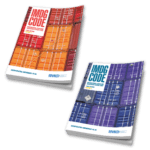
|
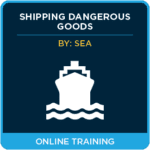 Shipping Dangerous Goods by Sea (IMDG Code) |
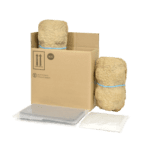 4GV Securepacc™ Complete 4GV Securepacc™ CompleteShipping Kits |
References:
International Maritime Organization, The International Maritime Dangerous Goods (IMDG) Code UN Sub-Committee of Experts on the Transport of Dangerous Goods, UN Recommendations on the Transport of Dangerous Goods – Model Regulations Twenty-first revised edition
United Nations Sub-Committee of Experts on the Globally Harmonized System of Classification and Labelling of Chemicals, Globally Harmonized System of Classification and Labelling of Chemicals (GHS Rev. 9, 2021)
IAEA, Regulations for the Safe Transport of Radioactive Material
OECD, Test No. 439: In Vitro Skin Irritation: Reconstructed Human Epidermis Test Method
Science Direct, “A new reconstructed human epidermis for in vitro skin irritation testing”
UN Sub-Committee of Experts on the Transport of Dangerous Goods, “Resilience of fibre-reinforced plastics (FRP) portable tanks”



